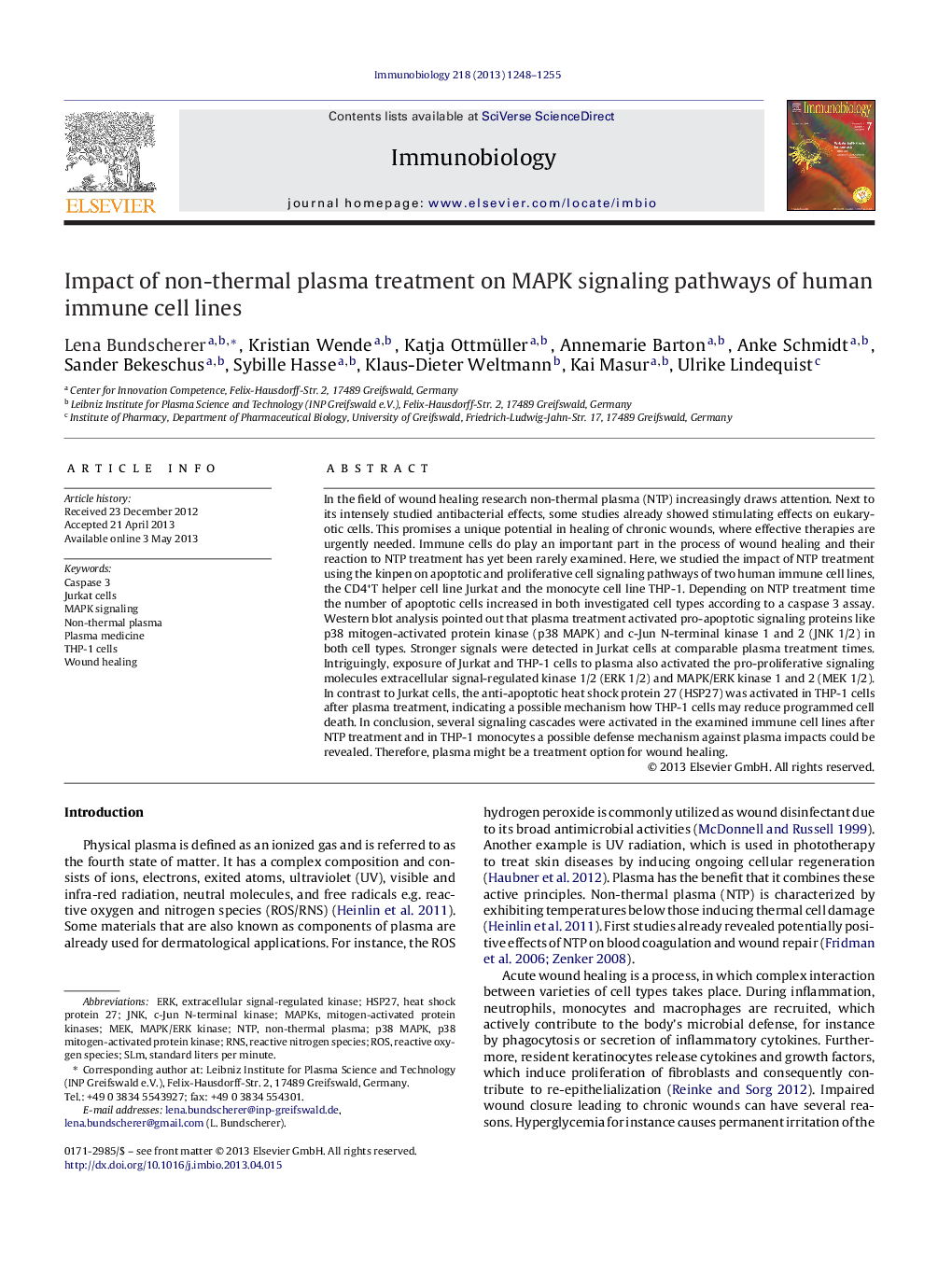| Article ID | Journal | Published Year | Pages | File Type |
|---|---|---|---|---|
| 2182926 | Immunobiology | 2013 | 8 Pages |
In the field of wound healing research non-thermal plasma (NTP) increasingly draws attention. Next to its intensely studied antibacterial effects, some studies already showed stimulating effects on eukaryotic cells. This promises a unique potential in healing of chronic wounds, where effective therapies are urgently needed. Immune cells do play an important part in the process of wound healing and their reaction to NTP treatment has yet been rarely examined. Here, we studied the impact of NTP treatment using the kinpen on apoptotic and proliferative cell signaling pathways of two human immune cell lines, the CD4+T helper cell line Jurkat and the monocyte cell line THP-1. Depending on NTP treatment time the number of apoptotic cells increased in both investigated cell types according to a caspase 3 assay. Western blot analysis pointed out that plasma treatment activated pro-apoptotic signaling proteins like p38 mitogen-activated protein kinase (p38 MAPK) and c-Jun N-terminal kinase 1 and 2 (JNK 1/2) in both cell types. Stronger signals were detected in Jurkat cells at comparable plasma treatment times. Intriguingly, exposure of Jurkat and THP-1 cells to plasma also activated the pro-proliferative signaling molecules extracellular signal-regulated kinase 1/2 (ERK 1/2) and MAPK/ERK kinase 1 and 2 (MEK 1/2). In contrast to Jurkat cells, the anti-apoptotic heat shock protein 27 (HSP27) was activated in THP-1 cells after plasma treatment, indicating a possible mechanism how THP-1 cells may reduce programmed cell death. In conclusion, several signaling cascades were activated in the examined immune cell lines after NTP treatment and in THP-1 monocytes a possible defense mechanism against plasma impacts could be revealed. Therefore, plasma might be a treatment option for wound healing.
